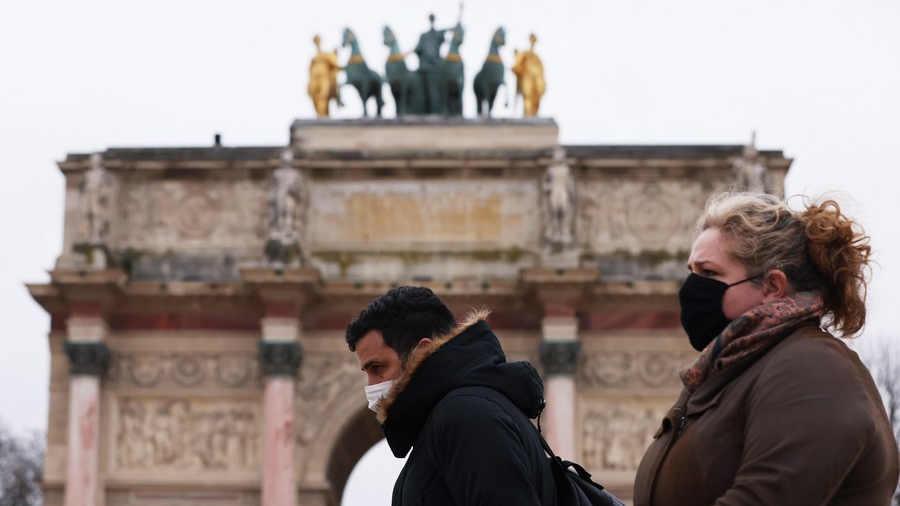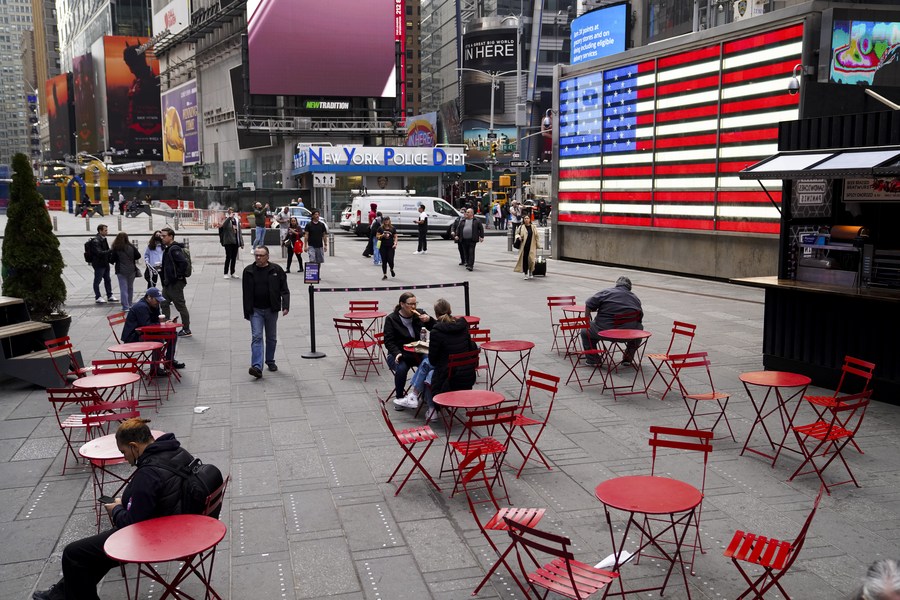
People wearing masks walk past the Arc de Triomphe du Carrousel in Paris, France, January 19, 2022. /Xinhua
People wearing masks walk past the Arc de Triomphe du Carrousel in Paris, France, January 19, 2022. /Xinhua
Editor's note: Anthony Moretti is an associate professor in the Department of Communication and Organizational Leadership at Robert Morris University. The article reflects the author's opinions and not necessarily those of CGTN.
For someone like me, this is the most exciting time of the year. My university, like thousands across the U.S., are beginning the 2022-23 academic year, and we do so with the hope that our students will have a year resembling what college life was like before the pandemic.
For me, that hope is magnified by the reality that my younger son entered college this year. I want him to learn, to thrive, to have fun. And I want him to be safe from COVID-19.
The data is not encouraging. By now, you know the United States has had the most reported cases and the most deaths because of COVID-19 of any nation in the world. There have been more than 96 million cases and more than 1 million deaths over the past two to two and a half years, and there is no reason to doubt that those numbers will rise in the coming months.
The Centers for Disease Control and Prevention (CDC) announced just days ago that three in every 10 U.S. counties, districts or territories were at high levels of COVID-19, and another four in 10 were at a medium level. The CDC added that 50 percent of Americans eligible for a vaccine booster shot have not received it.
Let's not mince words here: America is ripe for the continuation of stubbornly high cases and deaths. The annual flu season is mere weeks away, meaning the country's hospitals and medical centers will soon see COVID-19 and flu patients lining up for care.
The toll of the past roughly 30 months on America's youths and young adults is especially acute. As one example, the Chronicle of Higher Education reported earlier this week that government officials were asking for American colleges and universities to hire more counselors and improve programs targeting mental health.
According to the Chronicle, "College students struggled with psychological well-being earlier than the pandemic, however these issues escalated after they spent virtually a year in isolation and away from the everyday help universities can offer.
Now, lots of these college students are seriously contemplating dropping out of college to avoid stress and anxiety, mental-health advocates say. Greater than 1.3 million college students have dropped out of college for these reason since the pandemic began."
As you consider that 1.3 million figure, remember that the rule of thumb in the U.S. is that a college graduate will earn $1 million more in his or her life when compared to someone without a college degree. Fewer college graduates are not good for the future of the American economy.

People are seen on Times Square in New York, the United States, March 7, 2022. /Xinhua
People are seen on Times Square in New York, the United States, March 7, 2022. /Xinhua
Despite the ever-climbing cases and death tolls, and the obvious mental health and other crises stemming from the pandemic, the U.S. and the West stubbornly want to focus on another story: China's handling of the COVID-19. Keep in mind, the same data set used above to document cases and deaths in America also reports that China has had fewer than 250,000 cases and roughly 5,000 deaths over the past two to two and a half years. Nevertheless, the media continue to paint a picture suggesting China's "hard-line" policy against the virus is wrong.
Consider this excerpt from a recent story from the Associated Press, which reported on the latest lockdown in China: The country's "'zero-COVID' policy ... contrasts starkly with moves by other nations to coexist with the virus through gradual easing of restrictions, vaccinations, improved therapeutics and voluntary isolation."
Earlier this year, the U.S. Ambassador to China raised eyebrows when he said that he understood why U.S. government officials or business leaders would not want to visit China right now. Nicholas Burns suggested that it was too much to expect them to "quarantine for 14 days before they can have a single meeting." It appears no journalist dared to ask the ambassador why China should be considered wrong for protecting its people above all else. And no journalist appeared eager to ask why the Western notion of putting business before health was one China had to follow.
Why in other words was the U.S. approach to handling the pandemic beyond criticism while the Chinese approach was simply wrong?
However crass it might seem to use cases and deaths as barometers of success, it is irrefutable that China has been a safer place when compared to the U.S. and the West. Of course, this uncomfortable truth does not align well with the ever-present Western narrative suggesting China employs and defends one policy after another inconsistent with Western norms. As such, China cannot be praised for how it has handled the pandemic. Rather, it must be defined as draconian, irresponsible or dangerous.
Few people want to ask if it is draconian, irresponsible or dangerous to be the only country in the world where 100 million diagnosed cases is possible before the end of the calendar year.
(If you want to contribute and have specific expertise, please contact us at opinions@cgtn.com. Follow @thouse_opinions on Twitter to discover the latest commentaries in the CGTN Opinion Section.)

